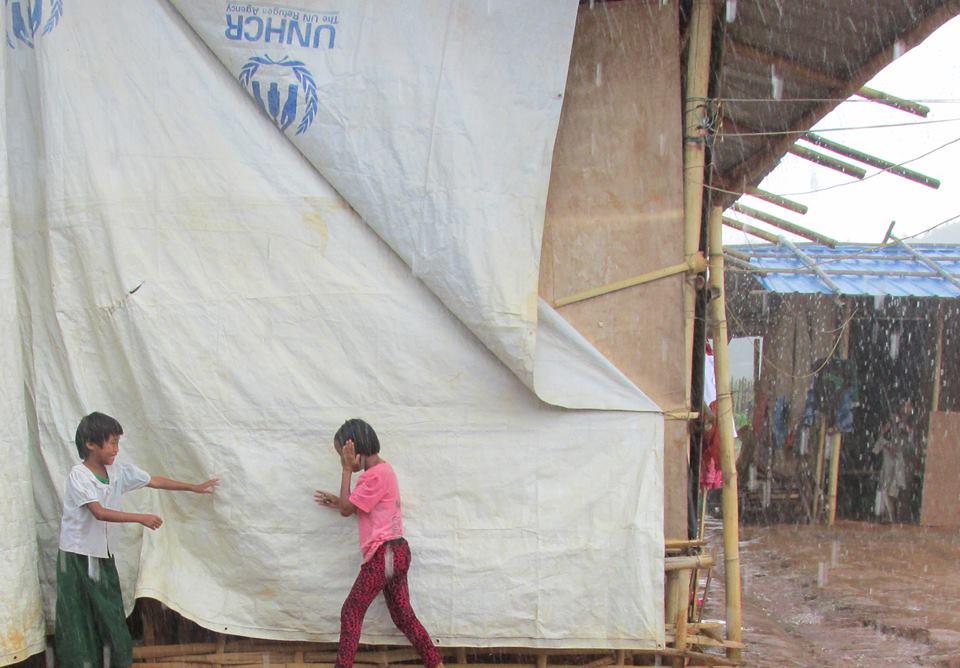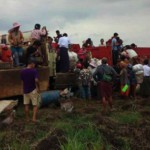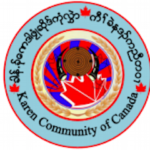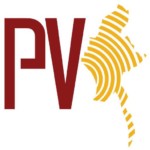Joint Strategy Team | April 5, 2017
Escalating armed conflict in Kachin between the Myanmar Armed Forces (Tatmadaw) and Kachin Independence Army (KIA) during November 2016 to January 2017 caused renewed displacement for 6,066 already internally displaced persons (IDPs) living in Kachin Independence Organisation-controlled areas (KCA). Forced to flee once again into other parts of KCA and Myanmar Government controlled areas (GCA), has exacerbated hardship and trauma for IDPs already living precariously.
Leading the Kachin humanitarian response since 2011, the Joint Strategy Team (JST), a collaboration platform of nine national NGOs, conducted this 2017 rapid assessment to identify and better understand the current needs of re-displaced IDPs and the few remaining in camps such as Maga Yang. By improving understanding, the ultimate aim is to guide the humanitarian response to best meet IDPs’ needs and rights. The following are an extract of key findings and recommendations.
• Diverse Needs: Displaced across 21 GCA and KCA locations, 40% of IDPs are identified as highly vulnerable, but needs vary. Shelter, WASH and education support is urgently needed for new camps like Sha It Yang (KCA); shelter for IDPs relocated to established camps, and protection for remaining IDPs, such as in Maga Yang (KCA).
• Insecurity: remains a major concern, particularly in KCA, where only 9% of IDPs responded feeling completely safe, compared to 38% in GCA. Compared to previous camps, 63% in KCA and 90% in GCA feel safer in their current location.
• Improving the security of camps is a major priority, particularly in KCA. All warring parties must refrain from active armed conflict in close proximity to camps and uphold international humanitarian law ensuring protection of civilians.
• Psychosocial support: due to multiple displacement during recent conflict, IDPs, particularly women, elderly, youth, and children, faced great distress and trauma. Newly established camps like Hka Shi and Sha It Yang lack psychosocial support services at the moment
• Psychosocial support must be made easily accessible and tailored towards the socio-cultural context with priority focus on children and youth.
• Shelter: 89% of IDPs in KCA and 48% in GCA reported a need for shelter, with many living in makeshift conditions, especially under tarpaulins. Already suffering through the cold season, wet season will exacerbate problems.
• Robust shelter assistance is urgently required before the impending onset of wet season. Otherwise, there will likely be a major health crisis. This is avoidable if swift action is taken.
• Food, Livelihoods/Market Access: 76% of KCA and 62% of GCA IDPs report the conflict affecting their livelihood in the past two months. Overall, 70% of IDPs are unable to meet their daily needs due to financial constraints. Only 9% of KCA and 40% of GCA IDPs reported access to functioning markets, with insecurity being the major barrier.
• Food assistance is critical in the short term, while also encouraging market development, especially in KCA. Cash grants (both areas) and materials (KCA) should also be provided immediately to meet short-term needs and rehabilitate longer-term livelihoods, according to individual camp dynamics, such as land availability.
• Health: chronic and transmittable diseases are prevalent across KCA and GCA camps with diarrhoea (30% KCA / 6% GCA), dengue/flu (6% / 8%) and malaria (8% / 0%) the most commonly reported as occurring in the past year.
• Comprehensive health care assistance is needed, including sufficient medical supplies, but with priority for WASH, treatments for the three most prevalent illnesses mentioned above and mosquito nets.
• Education: school buildings (51% KCA / 48% GCA) and student materials (42% / 48%) were identified as the priority education needs by IDPs. Many students’ education has been disrupted or cancelled, thus increasing the urgency of education-oriented support.
• Although school buildings exist in some locations, many are temporary or dilapidated structures, thus requiring support according to each camp context, while support for student materials should be widespread.
• WASH: only 34% of KCA and 41% of GCA IDPs feel they access enough water for drinking. The figures are even lower for bathing water (33% / 31%) and cleaning water (34% / 28%).
• Immediate and long-term WASH assistance is required, particularly in new camps like Sha It Yang camp, where only temporary solutions exist. WASH interventions must be designed to meet the specific needs of women, such as ensuring accessibility and dignity for women.
• IDP’s future perspectives and R&R wishes: In both sides the majority of IDPs would like to go back to their original places, if there is guaranteed safety and security.
• Future movements: for IDPs wishing to move to safer places, assessments should be conducted and IDPs should be supported to make informed, voluntary decisions.
All of the above key findings and recommendations require urgent attention and a comprehensive response. Beyond this assistance, an immediate cessation of hostilities, upholding of international humanitarian law and unrestricted humanitarian access are well overdue and of utmost importance. The JST calls on all stakeholders, national and international, to redouble their efforts and take all the necessary action towards achieving peace and adequately supporting IDPs.
This update also appeared on Progressive Voice on April 5, 2017.






![‘Not Only Do They [Burma Army] Aim Their Weapons Against Civilians, They Also Rape the Women’: Ah Ze, General Secretary of AKYU — PART 1](https://www.burmalink.org/wp-content/uploads/2018/10/Ah-Ze-speaking-at-AKYU-anniversary-150x150.jpg)